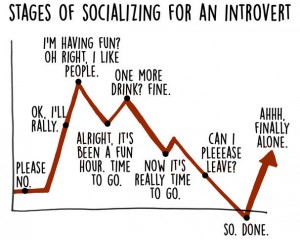My whole life it seems, is about creating engagement and interaction, with my husband, with my kids, my friends, my church, my neighbors, the school. And then there is my job. It’s what I do – create interactive learning opportunities through corporate team building. For a living. It’s my thing.
But I had a HUGE a-ha moment last week thanks to a unique program I went to called GaMPI Talks.
On the meetingWorks side of the business, Abby Freeman and I had the opportunity to be involved in GaMPI Talks as a sponsor. We got to share about how meetingWorks is all about reimagining and upgrading the meeting participant experience because, really, at the end of the day, it’s not about the meeting, it’s about the people at the meeting.
As an extrovert, I get caught up in the activities and discussions and the sharing and the turn to your neighbor and the diads and triads and the . . . and the stuff that leaves introverts exhausted and frankly, the extroverts even a little worn out. Yet, that’s still what I tend to get excited about when planning about the participant experience.
In our follow up meeting yesterday, Abby, my [introvert] partner, pointed out that her favorite part was when J. Noble with Alliance@Work wrapped up at the end of the day, he had everyone take a few moments to write down the moments that made the biggest impact. Write down the ways you could apply the learning.
This INNERactive element was critical to the success of the program. To fully engage in the content, a participant has to internalize it and apply it. He or she must look inside to make change happen. This is INNERACTIVE engagement. And it’s necessary for both introverts and extroverts. Eureka!
As you plan your meetings and conferences and events, are you focused on the needs of your participant? Or are you focused solely on the logistical details that make the meeting run effectively? It’s a subtlety for sure, some would even say a semantics issues. Both are critical, but ultimately, for a meeting to work, the participants must be the central focus, because they are the ones who need to grow and change for the organization’s objectives to be achieved.
So I’m reminding myself, along with all of us, that we must consider how to provide interactive engagement, but inneractive engagement as well. What do you think? How can you provide inneractive engagement in tandem with interactive engagement to your participants?







Leave a Reply